RPR’s Ultimate Guide to Geographic Farming
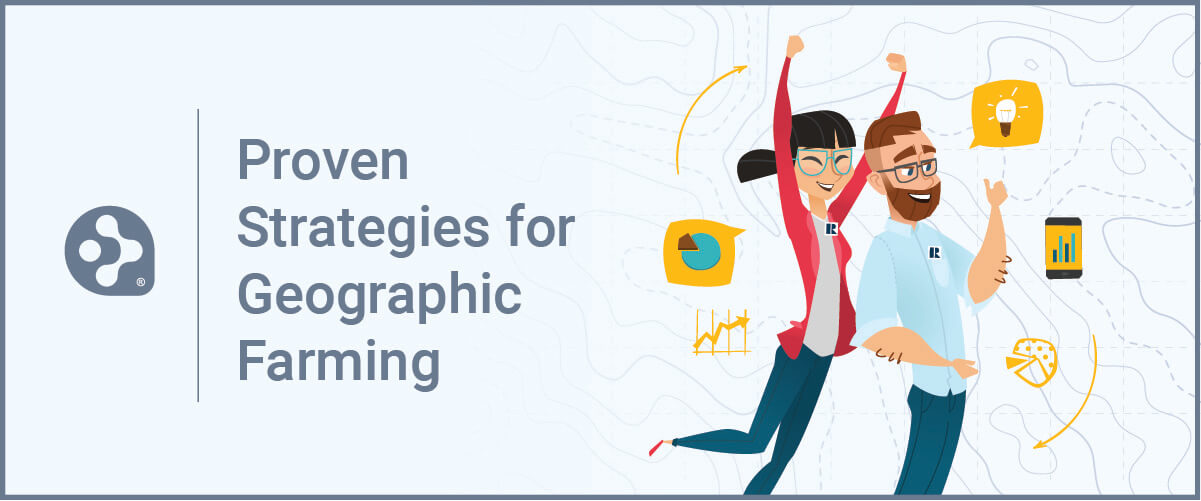
Right now, the market is short on inventory and sellers are in high demand. You need help finding sellers, and finding them yesterday. That’s where geographic farming comes in.
And at RPR, we can help. We want to provide you with content that you can dive into and tackle so you’ll be prepared for the current market.
This geographic farming and prospecting article is a perfect example. You may have considered applying a technique like this to market yourself, but perhaps you held off because you thought it was too complicated or time-consuming. Well, now you can properly sink your teeth into this topic and this article will explain each step and every detail.
Start your neighborhood farm off right
Farming, also known as geographic farming or prospecting, is a proven method of marketing your real estate business to a neighborhood or local proximity in a way that raises awareness of your brand, captures leads, earns referrals and gains listings. When used effectively, farming provides an excellent opportunity to connect with potential sellers. But what should you consider when selecting your farm area? This article will review best practices for selecting a farm area; then review how to save a farm area using RPR’s map, and how to generate mailing labels, CSV mailing exports and reports that will spark homeowner interest.
5 Questions worth answering before committing to a farm area
A predetermined set of criteria for establishing your geographic farm area will help save time and energy, and further your goal of becoming the de facto REALTOR® of choice. Here’s a checklist of questions used by other REALTORS® who rely on farming to build their businesses:
1 Is the neighborhood nearby and easy to get to?
Operating a farm area outside your normal commute can be a challenge if you want the campaign to be consistent and affordable. A consistent effort includes touchpoints at least every three to four weeks, on a long term basis, so easy access to your farm area is an important consideration.
2 Does the area have an acceptable turnover rate?
One of the most important aspects of identifying a farm area, turnover rate, is a simple calculation that helps to identify whether the area has enough sales activity to sustain your prospecting campaign.
To figure out the turnover rate in your potential farm area, divide the number of homes in your farm area by the number of homes sold in the last 12 months.
- For example, let’s say 15 houses have been sold in the past 12 months. There are 150 homes in the area. Therefore:
- (15 ÷150) x 100 = 10% turnover rate
- You typically want to see 5% turnover rate or higher.
3 What’s the Absorption Rate in the neighborhood?
Another helpful metric that can determine the potential for success is Absorption Rate—a calculation used to predict how many months worth of inventory are in a particular neighborhood.
To calculate months of inventory for your farm area, first calculate the rate of sales. Next we can use that to determine the Absorption rate.
Using the same example as above, we’re looking at the last 12 months (365 days), and 15 homes have sold during that time period. And lastly, there are 3 current listings.
Rate of Home Sales calculation:
- Time Frame/Number of Sold Homes = Rate of Home Sales365 days / 15 = 24.3
This tells us that 1 home is sold every 24.3 days
Now we can calculate Absorption Rate:
- Number of active homes x the rate of home sales =3 X 24.3 = 72.9 days (Or 2.43 Months)
This tells us that if market conditions remain consistent and if no new listings come on the market it will take 72.9 days (Or 2.43 months) for the current inventory to sell at the current pace of the market.
4 Is the number of homes manageable for consistent marketing outreach?
Your goal is to get your brand in front of as many eyes as possible. Yet, you need to sustain your farm campaign consistently, with depth and quality, and with a long-term vision in place. Keeping those costs and available resources in mind is important. The key? Market only to as many homes as your budget will allow, every month.
5 Does one agent currently dominate sales activity for the neighborhood or have homes been sold by many different agents?
Real estate is a competitive business with many agents establishing unspoken territories. Knowing that, and preparing is key to developing your farm area. Look for areas that have a multitude of agents selling with no defined market share. Chances are the area isn’t being marketed heavily by any one agent, giving you an opportunity to consistently brand yourself as the local expert.
How To Put Your Geographic Farming Plan Into Action
To calculate the metrics above such as Turnover, Rate of Sales and Absorption Rate, requires that you know numbers like total homes in the area, number of homes sold in the last year, and number of active properties. To get you started we have created a turnover calculator which can be viewed here. Follow the steps below to complete the document.
First, lets get the number of homes in a neighborhood:
- Sign on to narrpr.com
- Select Research from the main navigation, and then choose Map Search.
- Enter the geographic (Neighborhood name, ZIP or City) area representing your potential farm area.
- From the Type/Status dropdown select Public Records.
- Select the magnifying glass to Search.(Note: if you’ve searched a zip code or larger area you may receive a message saying you have too many results. Click Close.)
- Pan and zoom the map to center your farm area in the window.
- Choose the geographic farm boundaries. This can be accomplished a few different ways:
- Identify pre-defined neighborhoods:
- From Show Geographies (located at top of the map), try Intermediate, Minor or Micro Neighborhoods.
- Now select the geographic area that matches your potential farm. The area will turn orange.
- Draw a shape:
- Use Draw (freehand, box, radius or polygon) or Driving (drive time or distance) to define a specific area.
- Once the shape is set, choose Save Area. Enter a name, and Click Save Area again.
- Identify pre-defined neighborhoods:
- With the neighborhood still selected, choose Search in This Area. The count will be shown directly above the map.
- Write down the total number of homes in the turnover calculator.
- Repeat for each neighborhood you’ll be comparing.
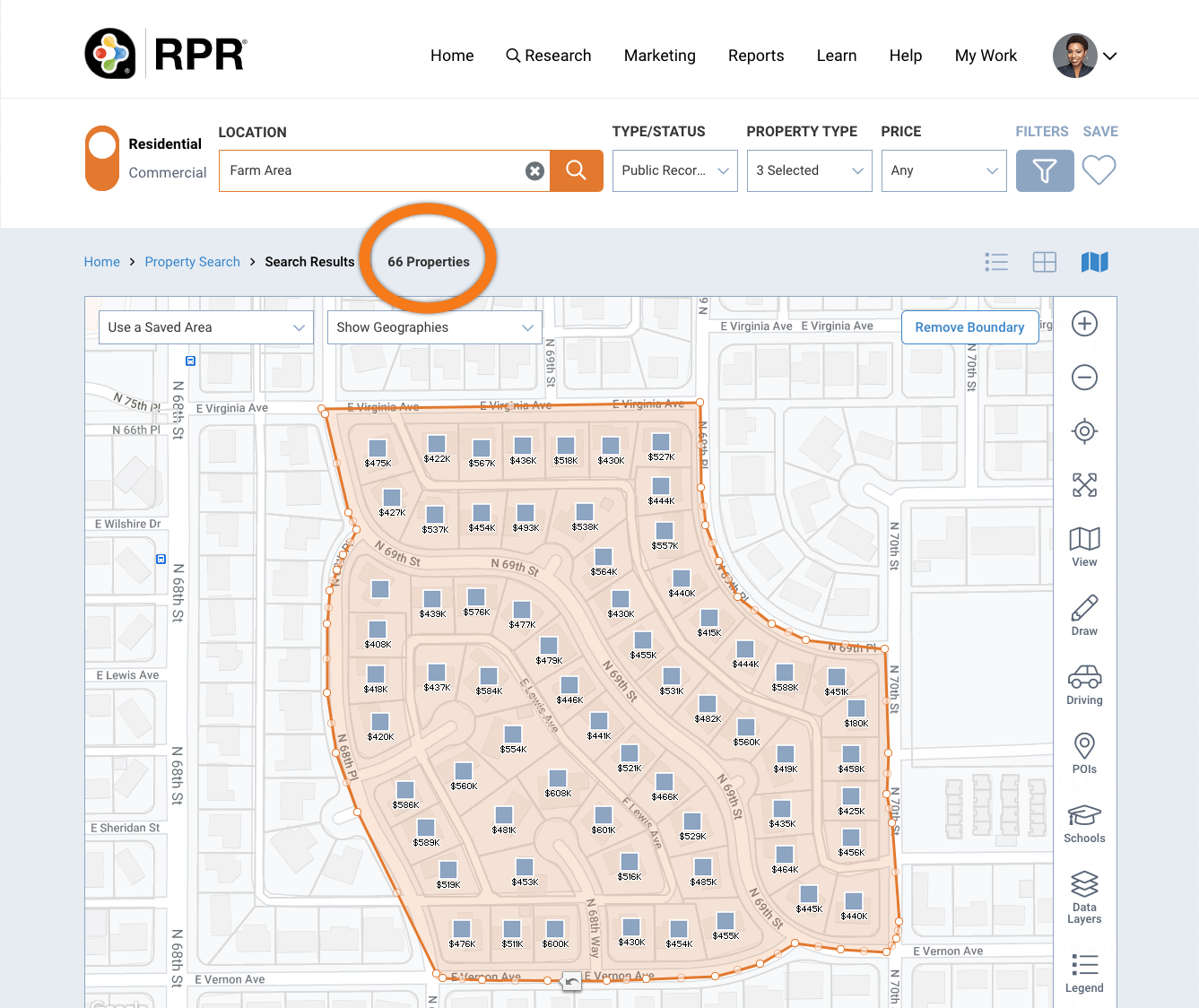
Next, we’ll determine the number of homes sold in the neighborhood over the last 12 months.
- Above the map, from the Type/Status dropdown select For Sale, and then select Closed.
- Now click on the date field to the right of closed, then select Last 12 Months.
- Also select Include public records solds.
- Now select the orange magnifying glass to search again.
- Record the sold count of properties in your template worksheet.
- Repeat for each neighborhood you’ll be comparing.
Identify the number of homes currently listed in the farm area.
- For this, we need to go back up to the Type/Status dropdown and uncheck Closed and now check Active.
- Select the magnifying glass.
- View the number of homes currently listed under the map.
- Record the number in your worksheet.
- Repeat for each neighborhood you’ll be comparing.
- With your numbers added to the Turnover Calculator, the 12-month turnover rate is calculated.
- Lastly, using your template worksheet, enter your estimated cost per mailing. This number does not come from RPR. It is the average per-piece marketing cost for each home in the farm area. Not sure? Try using the USPS Every Door Direct Mail calculator.
First Contact: How to get the Contacts for Your Mailing
RPR’s Mailing Labels feature provides REALTORS® the ability to create farming or prospecting lists and generate up to 2,000 pre-formatted labels per month for mailings to residential or commercial property owners, based on any RPR search.
The labels are available in popular formats, or users can choose to export the results into a standard CSV file. The data used to create the lists is licensed from Black Knight, RPR’s public records provider.
Mailing Labels are created from public records data and directly pulled from your search results. Filter your results through the advanced search, the left side of the results page or through the map drawing tools.
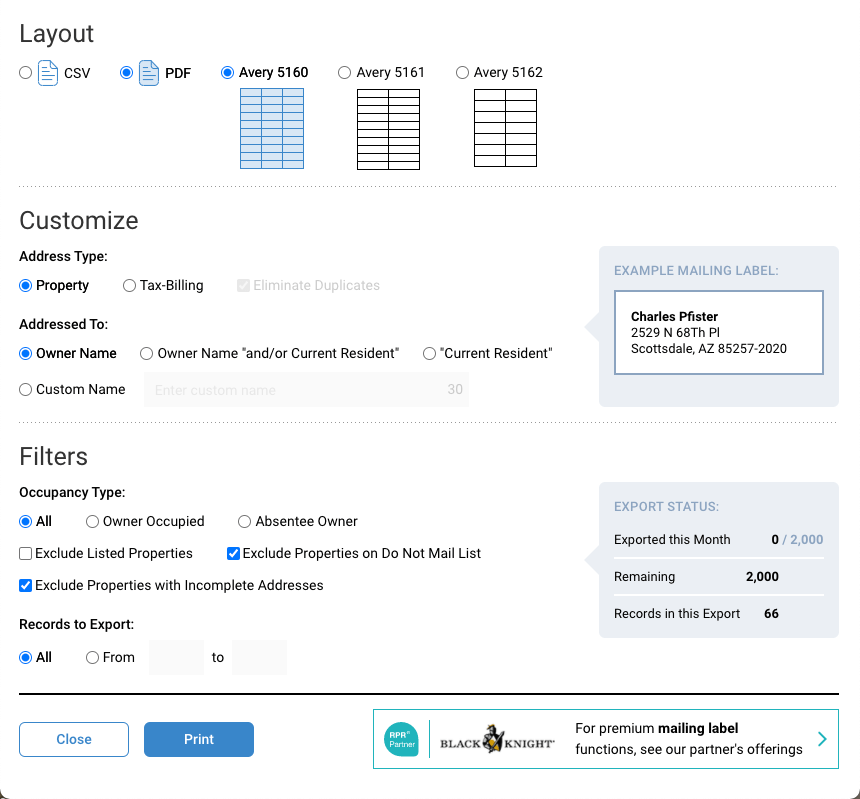
- Sign on to narrpr.com
- Select Research from the main navigation, and then choose Map Search.
- From the top left corner of the map, select the Saved area we created earlier, and then click Search in this Area.
- Now toggle over to List or Gallery view and confirm your results look correct.
- Now select Mailing Labels.
- The Mailing Labels dialog opens.
- LAYOUT: Choose your output: CSV or PDF
- If PDF is selected, choose from 3 format options
- Avery 5160: 30 per sheet
- Avery 5161: 20 per sheet
- Avery 5162: 14 per sheet
- If PDF is selected, choose from 3 format options
- CUSTOMIZE: Choose address and owner name format
- Select Address Type: Property or Tax Billing
- If Tax-Billing is chosen, you can also choose to Eliminate Duplicates
- Choose how you want the labels addressed
- Owner Name
- Owner Name “and/or Current Resident”
- “Current Resident”
- A Custom Name you enter
- Select Address Type: Property or Tax Billing
- FILTER your labels:
- Choose Occupancy Type:
- All – Includes all properties in the search results
- Owner Occupied -Only includes properties where the fields “owner occupied” is set to Yes
- Absentee Owner- Only includes properties where the fields “owner occupied” is set to No
- Select which labels to exclude:
- Exclude listed properties
- Exclude properties on Do Not Mail list
- Exclude properties with incomplete addresses
- Select which Records to export:
- All (Up to 2,000 per month)
- Range (From/to): controls the number of records to export by specifying a selection range.
- Choose Occupancy Type:
Applying What You’ve Learned: RPR Reports
In this section, we’ll outline a few reports best suited to your geographic farming needs, and finally how to instantly respond to on-the-spot consumer inquiries and leads.
Market Activity Report
RPRs Market Activity Report is a snapshot of all the changes in a local real estate market. It includes a list of active, pending, sold, expired and distressed properties, including recent price changes. You can choose to go back days or weeks, and even up to three months.
Prior to walking your farm area, generate and save a Market Activity Report. Then, when striking up a conversation with the homeowner, use the RPR app to share the area’s sales activity, even offering to email or text the report without skipping a beat.
Even if the homeowner isn’t ready to sell, keep the conversation going by offering to send a monthly or quarterly Market Activity Reports. Perhaps the neighborhood has a few distressed properties your new client is concerned about or they’re thinking of selling when values increase. Here’s your opportunity to get in on the ground floor.
Carpet your farm area with the Market Activity Report, either by email, snail mail, or in person. Customize the report to let them know updates are available at frequent intervals. Direct them to your website to sign up for the next report. Ask them to email it to their neighbors.
Here’s what you will find in a Market Activity Report:
(Uncheck elements you wish to hide)
Report Elements:
- Market Snapshots
- Estimated Home Values
- 12-Month Change in Estimated Value
- Concentration of Distressed Properties
- Sales Price
- List Price
- Market Activity Summary Stats
- Market Activity Property Details
- About RPR and Our Data
- Choose the report timeframe:
- Last 3 Days
- Last Week
- Last Month
- Last 3 Months
- Last 6 Months
- Choose which statuses to show:
- New Listings
- Pending
- Price Change
- New Distressed
- Recently Sold
- Expired
- New For Lease
- Recently Leased
- Open House
Neighborhood Report
RPR’s Neighborhood Report is a user-friendly configuration of data that will help you know a farm area from the inside out. The report profiles the people, economy, quality of life, and housing for the areas you choose, and can be a great icebreaker when introducing yourself to homeowners with a “Get to Know Your Neighborhood” campaign.
Much like the Market Activity Report, generate the Neighborhood Report prior to walking your farm area. Then, when striking up a conversation with the homeowner, use your phone to share the neighborhood’s report, even offering to email or text the report to the homeowner. You might even want to pull out a fun or intriguing fact about the neighborhood and start the conversation off with a “Did you know” type of question.
Here’s what you’ll find in the Neighborhood Report:
(Uncheck elements you wish to hide)
- Age ranges
- Average income
- Occupations
- Education levels
- Voting trends
- Job growth, unemployment rate
- Cost of living
- Climate
- Average commute times
- Median list and sales prices
- Listing and sales volume
- Price range and price per square foot of homes sold
Property Report
RPR’s Property Report takes a deep dive into data sets such as listing and foreclosure activity, market statistics, demographics, property history, taxes, and school information. The report also includes a property’s before-and-after photos.
RPR’s Property Report is a great marketing tool for those follow-up efforts. And remember, with RPR you don’t need to go back to the office to create one. Let the homeowner know that you can easily email, text, or hardcopy a Property or Mini Property Report to them, complete with your evaluation of the home’s value as well as comps from the neighborhood.
Examples of what you’ll find in the Property Report include (among others):
- Property Values
- Comp Analysis Results
- Home and Homeowner
- FactsProperty Photos
- Refined Value
- Tax, Assessment and Mortgage History
- Sales and Financing Activity and Price Change History
- Distressed Info
- Map Layers
- Neighborhood Info
- School Scores and Reviews
- My Mobile Notes and Photos
Mini Property Report
As the name implies, RPR’s Mini Property Report is a handy, cost-effective deliverable that homeowners will find easy to digest. Most importantly, when your photo and contact info are emblazoned on the report, it’s sure to make a lasting impression on a potential client.
Examples of what you will find in a Mini Property Report include:
- Value
- List Price
- Comp Analysis Results
- Home and Homeowner Facts
- Property Photos
- Historical Data (taxes, assessments, mortgages)
Share This Story, Choose Your Platform!
15 Comments
Leave A Comment
TOPICS
AUDIENCE
CATEGORIES
TUTORIALS & GUIDES
SUCCESS STORIES
PROSPECTING
THE PODCAST

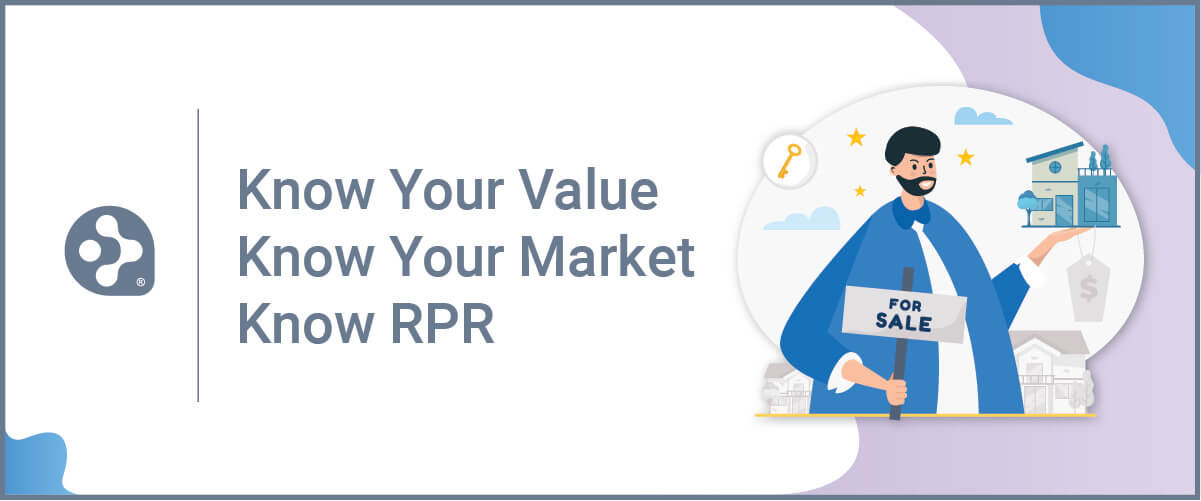
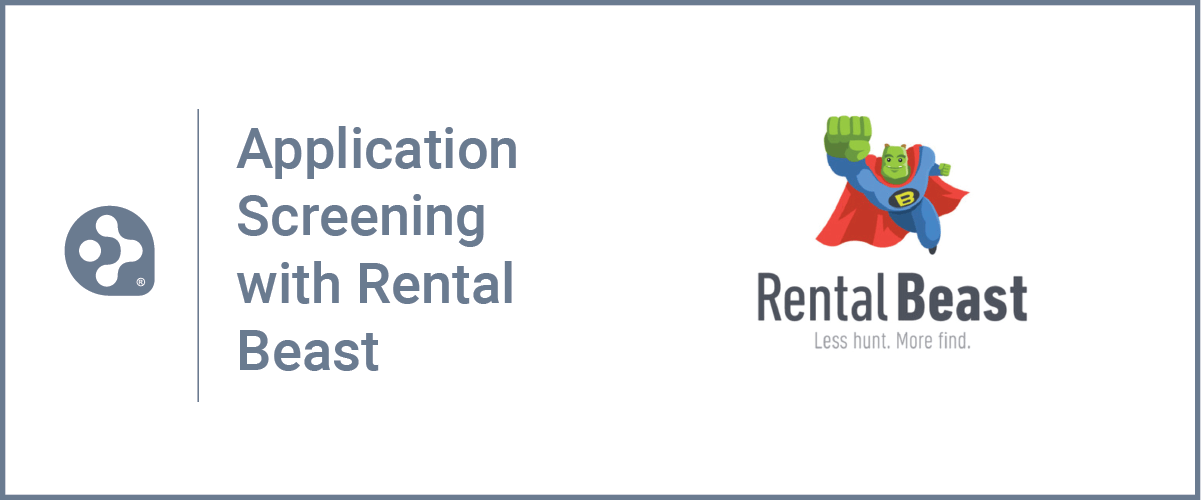
















I can’t believe it. This is exactly what I was trying to figure out this past weekend. Thank you so much for providing this very timely information!
Thank you. This is great information and so well laid out. Was able to produce results in minutes.
Grreat information….
Thank you for this information! I needed this tremendously.
Thank you so much for this great information and priceless guidance.
Thanks for this valuable information!
Many thanks Honey!
Amazing! What an awesome tool!
[…] geographic farming operation is known as a geo-farming operation and a demographic farming operation is known as a niche farming […]
[…] practice both traditional and digital methods of farming their land. Using a proven method, a geographic farming method limits sales and marketing efforts to a specific area. An effective segmentation strategy can be […]
Thanks for the tip
Great information for a cost-effective budget
[…] In the realm of local regulations, zoning regulations reign supreme. These rules dictate the distance requirements for keeping livestock near residential areas. […]
This is such precise step by step information on real estate farming! Super helpful tools that you provide. I felt overwhelmed on how to find neighborhood info. Thanks!@
I would love love love to collaborate with you give you a few tips on how to convert this thing into an amazing door knocking app.RPR has so much potential with just a few little buttons. App is amazing- Author of Dynamic Doorknocking